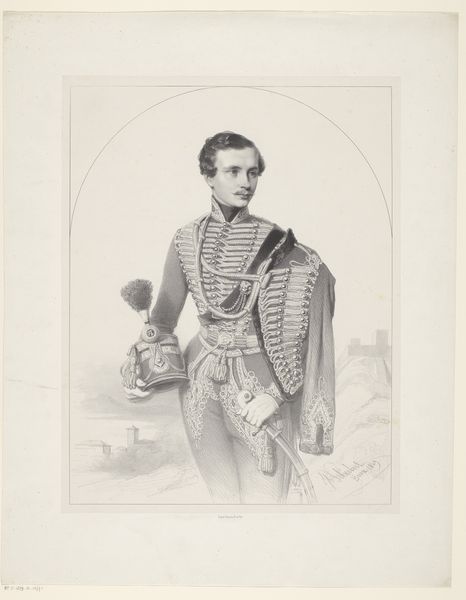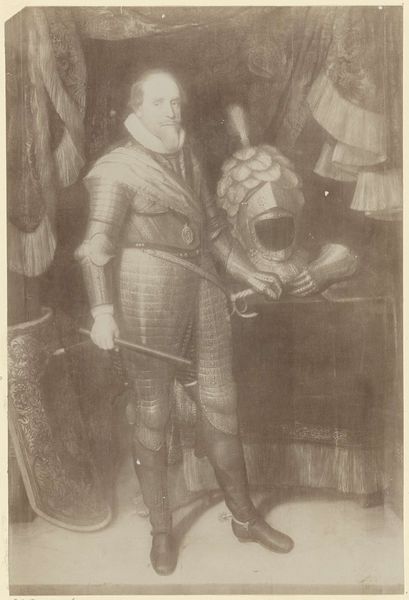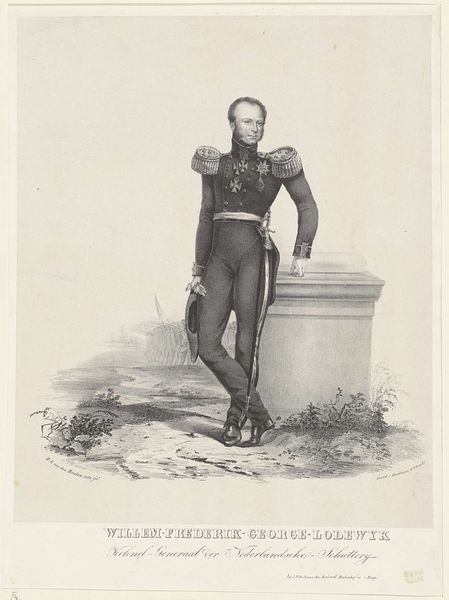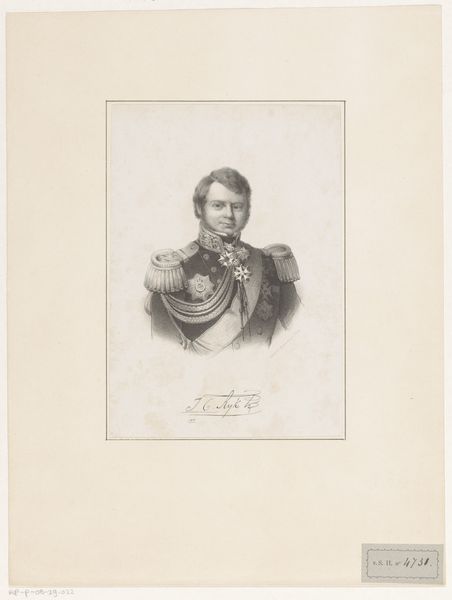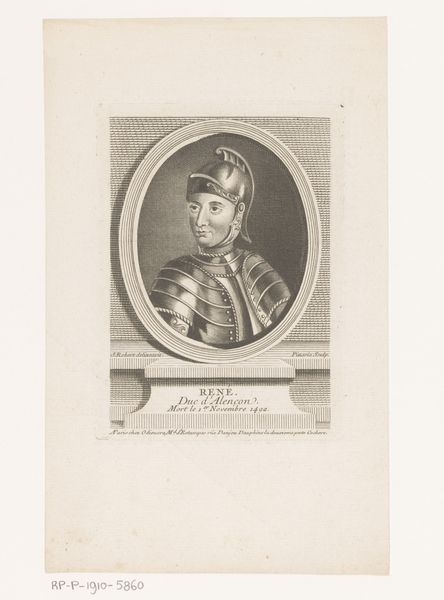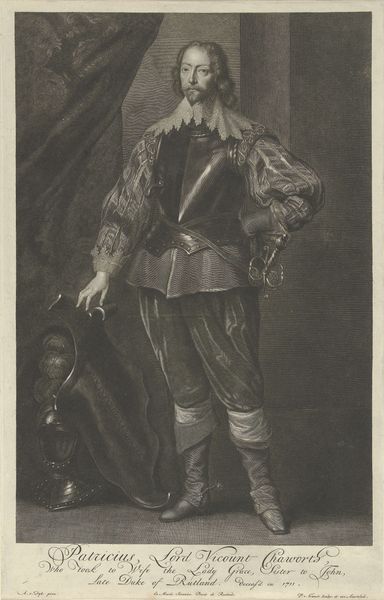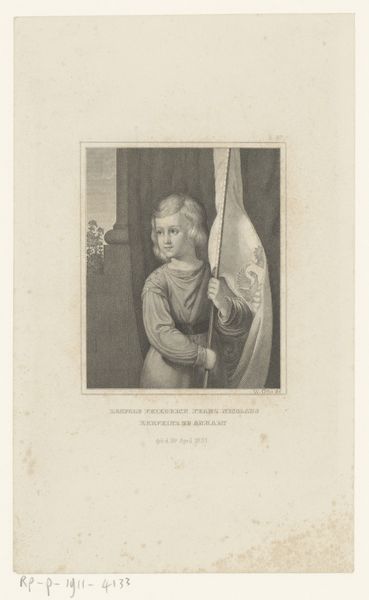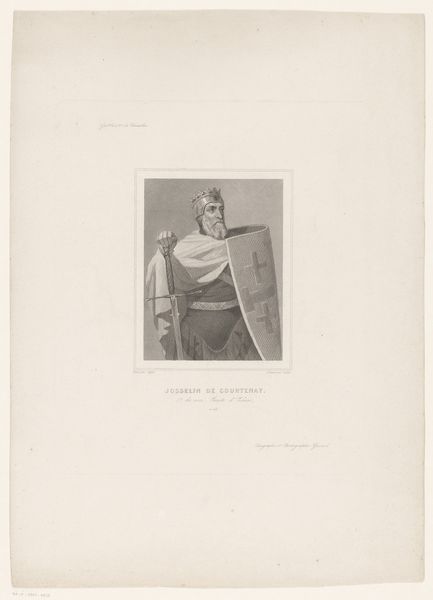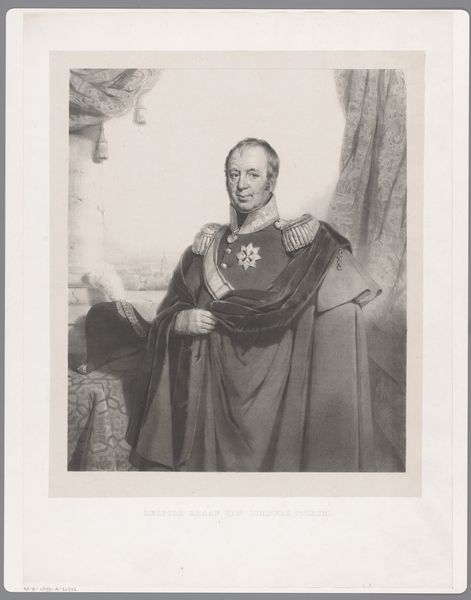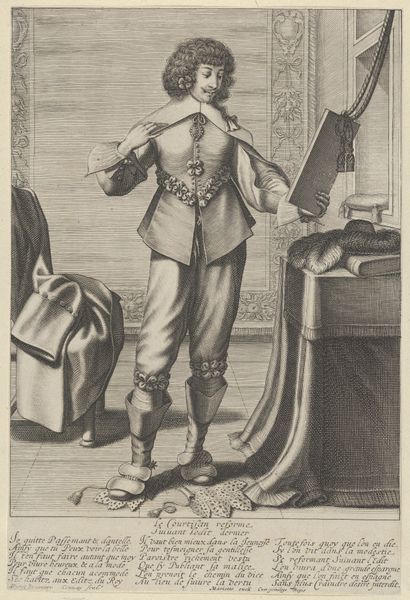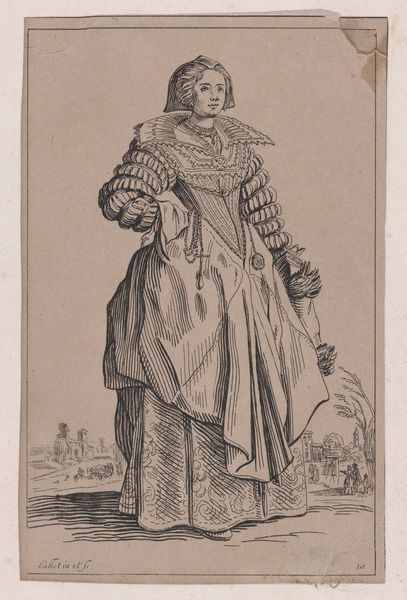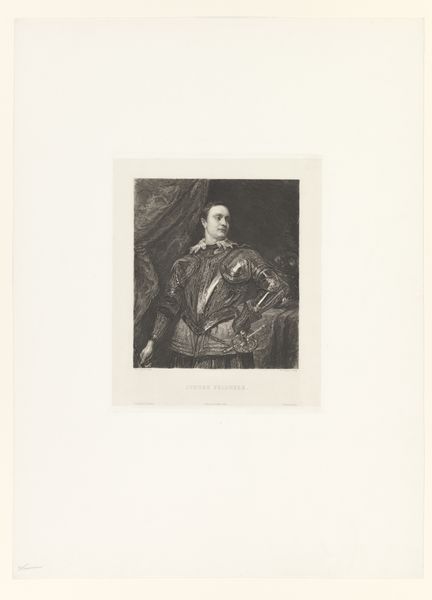
drawing, pencil
#
portrait
#
drawing
#
caricature
#
pencil drawing
#
pencil
#
portrait drawing
#
realism
Dimensions: height 525 mm, width 382 mm
Copyright: Rijks Museum: Open Domain
Editor: This is "Portrait of Otto Anna van Bylandt," a pencil drawing from 1850 by Augustinus Jacobus Bernardus Wouters, currently held at the Rijksmuseum. It's quite striking; he’s depicted kneeling in full armor, which is unusual. What narratives do you see unfolding within this portrait? Curator: I see a fascinating study in power, identity, and perhaps, anxiety. The subject’s armor suggests a longing for a past era of chivalry and authority. However, positioning him kneeling hints at vulnerability, dependence, and possible atonement, wouldn’t you agree? Editor: Yes, it's quite a contrast! I'm intrigued by how those traditional symbols interact. Can we read it as a commentary on aristocracy in the 19th century? Curator: Absolutely. Consider the political and social upheavals of the 19th century. The aristocracy's power was waning, forcing a re-evaluation of their place in society. The choice of attire can signal their desperate need to hold onto past traditions or to assert continued societal privilege in a rapidly changing world. How does his expression add to your understanding of this narrative? Editor: He doesn't exactly look like he's ready for battle. There's a pensiveness, maybe even a sadness. Curator: Precisely. It's through these visual clues that the artist critiques and dissects societal structures of gender, race, and class. Wouters encourages us to deconstruct idealized portrayals of masculinity and privilege. Do you think that this pencil drawing offers insight into understanding present societal and political dynamics? Editor: I see your point. It makes me consider what symbols and actions are being used to assert privilege today. That’s really changed how I see it. Thanks for sharing that perspective. Curator: It's in this dialogue between art and its historical context that we truly unlock the work's ability to challenge and enrich our present-day understandings.
Comments
No comments
Be the first to comment and join the conversation on the ultimate creative platform.
